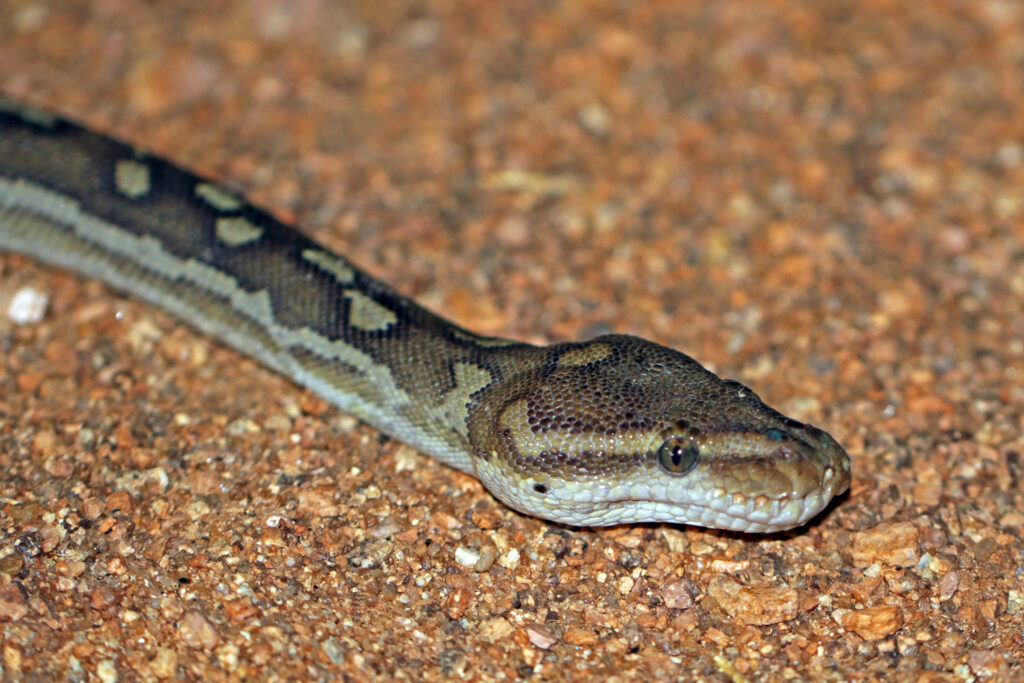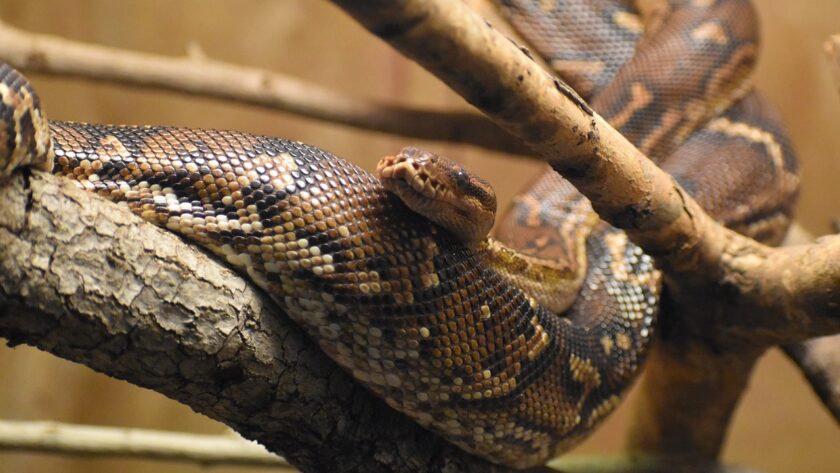Are you considering getting an Angolan python as your new pet? These beautiful and interactive snakes are perfect for beginner reptile keepers who want a bold and captivating pet.
As a native of Southern Africa, the Angolan python is a medium-sized constrictor that is non-venomous and highly sought-after in the reptile world.
In this article, we will provide you with expert tips and a comprehensive species profile to help you better understand how to care for your Angolan python. From housing to feeding and handling, we will guide you through the essential elements of providing the best care for your new pet.
Whether you are a seasoned reptile keeper or a first-time owner, our Angolan python care guide will help you give your pet the best life possible.
Table of Contents
Key Takeaways
- Angolan pythons are medium-sized constrictors native to Southern Africa, with rust, brown, or nearly black coloring with white and cream-colored bands and spots.
- They require large enclosures with plenty of space and stimulation, lighting and heat sources that mimic their natural environment, and a humidity level of 50% in their enclosure.
- Angolan pythons are easy to care for and good for beginner reptile keepers, but should be bought from reputable breeders and checked for parasites.
- They eat appropriately sized rodents, and handling should be done carefully and regularly to prevent aggression.
Angolan Python Care: Species Information

You may already know that the Angolan python is a sought-after, medium-sized constrictor native to Southern Africa. These snakes are typically found in Southern Angola and Northern Namibia, where their natural habitat includes rocky outcrops, rocky deserts, or open bush or grassland areas.
With rust, brown, or nearly black coloring and distinctive white and cream-colored bands and spots, the Angolan python has smooth dorsal scales and head scales resembling beads. They are bumpy to the touch due to their arid habitat and have large black eyes and five heat-sensing pits on each side of their head.
Conservation efforts have been made to protect the Angolan python population, which is considered threatened due to habitat loss and over-collection for the pet trade. As a result, it’s important for reptile keepers to obtain Angolan pythons from reputable breeders and avoid purchasing wild-caught specimens.
These snakes require large enclosures with plenty of space and stimulation, as they prefer solitude. Mimicking their natural environment with lighting and heat sources is also essential, along with providing a humid hide for extra humidity.
Angolan Python Care: Housing and Care
Create a spacious and stimulating environment for your medium-sized constrictor by providing them with a large enclosure that mimics their natural rocky or grassland habitat. Your Angolan python needs plenty of space to move around and explore, so aim for an enclosure that is at least 6 feet long and 4 feet wide.
Make sure the enclosure has plenty of hiding places, such as rocks and logs, to provide your python with a sense of security. To provide environmental enrichment, include a variety of climbing structures and branches. Your python will enjoy exploring their enclosure and climbing up high to bask in their heat source.
Additionally, provide a variety of substrate options to mimic their natural environment, such as paper towels, Eco Earth, or Aspen bedding. Finally, make sure the enclosure has appropriate lighting and heat sources to mimic their natural environment. A hot spot and a cool spot for thermoregulation should be included, and aim for a humidity level of 50% with a humid hide for extra moisture.
Regular spot cleaning and monthly substrate replacement is important for maintaining a healthy and happy Angolan python.
Feeding and Handling
Feeding and handling your Angolan python are important aspects of their care. As a medium-sized constrictor, they require a diet of small mammals, birds, and amphibians. It’s essential to feed them appropriately sized rodents as overfeeding or underfeeding can lead to health issues. A rule of thumb is to offer prey that is roughly the same size as the widest part of the snake’s body.
When handling your snake, it’s crucial to do so carefully and regularly. These snakes can become defensive or bite if they feel threatened. So, it’s important to approach them with caution and respect. Support their entire body and avoid sudden movements or loud noises that can startle them.
Parasites can be a problem with reptiles. Regular check-ups with a veterinarian and appropriate treatment with anthelmintics or dewormers can ensure the health of your pet. By providing a proper diet and handling techniques, you can ensure the health and happiness of your Angolan python.
Frequently Asked Questions
How do Angolan pythons compare to other python species in terms of temperament?
Temperament differences among python species exist, with Angolan pythons being more interactive and bold than ball pythons. They enjoy exploring and have distinct personality traits, making them a great choice for beginner reptile keepers.
Are there any common health issues that Angolan pythons are susceptible to?
Preventative care is crucial to avoid common illnesses in Angolan pythons, such as respiratory infections and mites. Regular vet check-ups, proper humidity and temperature levels, and clean enclosures can help ensure a healthy and happy python.
Can Angolan pythons be kept in groups or do they need to be housed separately?
As the old adage goes, “solitude is bliss” for Angolan pythons. These snakes prefer to live alone and may exhibit social behavior and aggression towards others. Group housing is not recommended for these creatures.
How often should an Angolan python be taken to the vet for check-ups?
Preventative care is key to keeping your Angolan python healthy. Annual vet visits are recommended, especially for younger or newly acquired snakes, to check for parasites and potential health issues.
What is the average lifespan of an Angolan python in captivity?
How long will your Angolan python live? Lifespan variations depend on several factors, including diet, genetics, and habitat. Proper care, including a balanced diet, appropriate temperature, and regular veterinary check-ups, can promote a healthy lifespan of up to 30 years.
Conclusion
Congratulations on choosing the Angolan python as your new reptile companion! With proper care and attention, your python will thrive and bring you years of enjoyment.
Remember to provide your python with a suitable habitat, plenty of food and water, and handle them with care.
In summary, whether you’re a novice or experienced reptile keeper, the Angolan python is an excellent choice for an interactive and fascinating pet. With our expert tips, you can provide your python with the best care possible to ensure they live a long, healthy, and happy life.
So go ahead, dive into the world of Angolan pythons, and enjoy the adventure!

